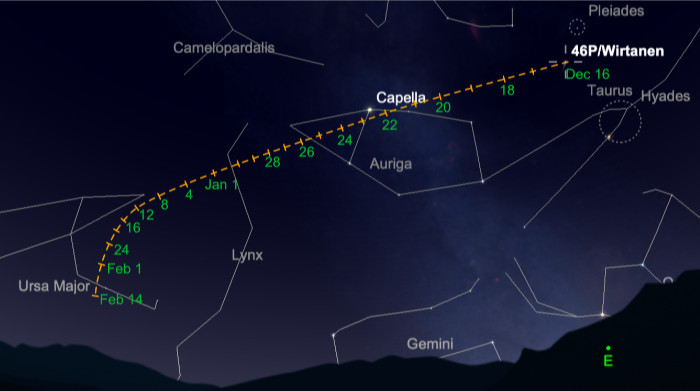| 2018 Dec: Comet 46p-Wirtanen is Here (2018-12-31) ⬅︎ |
 |
On Sunday, Dec. 16, the comet 46P/Wirtanen will reach perihelion when it is closest to the sun and at is brightest.
If it reaches magnitude +4 as predicted, it will be possible to see without a telescope. In comparison, the North
Star, Polaris, is magnitude +2 which means it is about 6 times brighter. So if the comet gets bright enough to see
naked-eye, it still won't be real bright. In any case, spotting a comet is special and we encourage you to try.
Comet 46P/Wirtanen is a short-period comet which means that it orbits the sun quickly. In fact, it goes around the
sun every five and a half years -- this is really fast. In comparison, Halley's Comet, another short-period comet,
takes 88 years.
If this comet orbits the sun so frequently, why all the attention this time? It is because it is expected to be closer
and brighter than normal. Scientists think that it will be at least 20 years before it is this bright again.
Use the diagram above to help you determine where to look each night until the middle of February. We
recommend you use a binocular since this will greatly improve your chances of spotting it. Look for it on the first
clear night because it will get dimmer and dimmer as it gets further from the sun.
Good luck! |
| |



